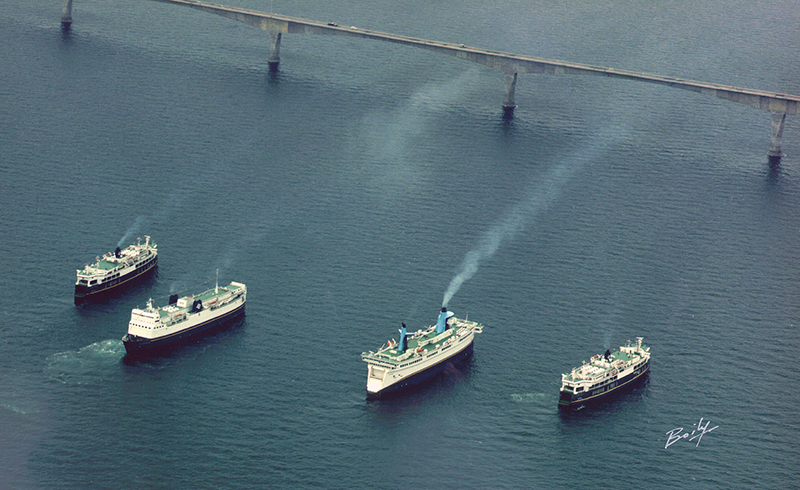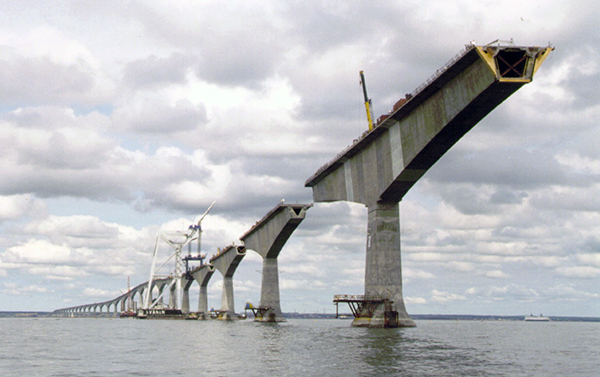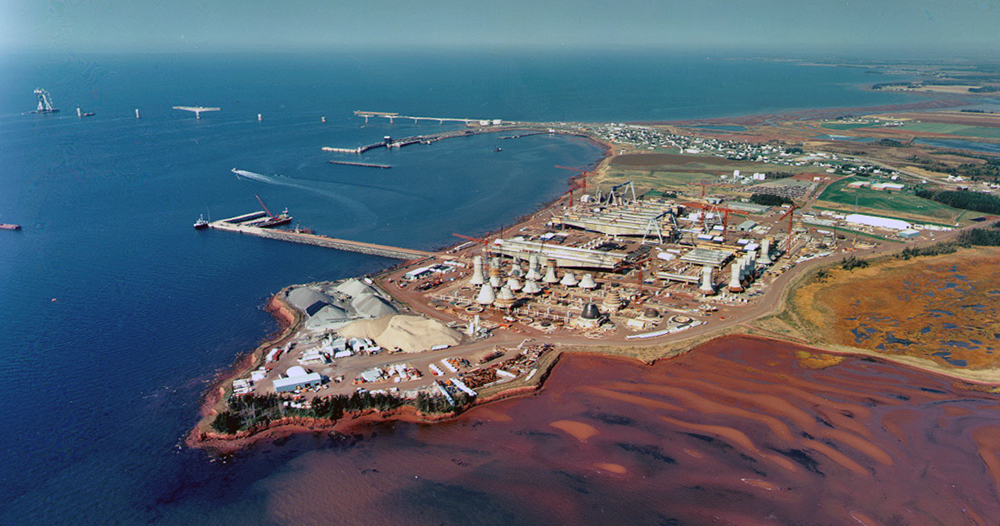The Confederation Bridge: Celebrating 20 years of connecting Canadians
New Brunswick and Prince Edward Island are famous for their landscapes, potatoes and East Coast hospitality. These 2 provinces, among the smallest in Canada, are linked by one of our country’s biggest achievements: the Confederation Bridge. Learn about the history of its construction and the important role that Public Services and Procurement Canada played and continues to play.
About the bridge
The Confederation Bridge is nearly 13 kilometres long and is the longest bridge in Canada. It is also the longest bridge in the world that spans ice-covered water. More than 1 million people drive across the bridge to visit Prince Edward Island every year.
The bridge opened with a pedestrian walk on May 31, 1997.
Before the bridge

Built in 1914, “The Prince Edward Island” was a train ferry that connected Prince Edward Island to Canada’s mainland.
For generations, the only way to reach Prince Edward Island was by ferry. When Prince Edward Island joined Canada in 1873, the federal government promised to provide year-round ferry service to carry people and mail between the island and the mainland.
Taking the ferry was the most common way on and off the island for more than 100 years. But thoughts of a bridge were never too far from Islanders’ minds. In 1988, Islanders voted 59.4% in favour of a bridge.
Public Services and Procurement Canada was a driving force behind the project. Then called Public Works and Government Services Canada, the department:
- evaluated design proposals
- managed the financing and contracting
- conducted environmental and remediation assessments
- reviewed more than 17,000 engineering and architectural drawings
After years of work, official construction of the bridge began in October 1993.
An engineering wonder

At a maximum height of 60 metres and with spans as long as 250 metres, the bridge allows cruise ships and other large vessels to pass underneath.
Built to last 100 years, the Confederation Bridge took almost 4 years to build. More than 5,000 local workers helped with the project, which cost about $1 billion. The Canadian Council of Professional Engineers (now Engineers Canada) rated the project within the top 5 engineering projects of the 20th century.
The bridge is supported by 65 piers. In the middle of the bridge, the piers are separated by spans as long as 250 metres each. During the height of construction, 1 span was built every week.
Although most of the bridge sits at 40 metres above sea level, it has high points of 60 metres. This height allows large vessels, including cruise ships, to pass under it.
Companies from Canada and around the world contributed to the overall design. The bridge boasts numerous innovative engineering features, such as:
- high-performance concrete
- a special road surface that minimizes spray during wet weather
- roughly 1 metre-high walls to block the wind
- ice shields on the piers to break the ice

“The photo above is quite special to me as I was on board the heavy lift vessel Svanen on the evening when the photo was taken.” – William Blight, P.Eng.
A lasting legacy
The Confederation Bridge was named in honour of the Charlottetown Conference of 1864. This famous conference helped open the way to Confederation just 3 years later.
William Blight was the Project Engineer with the Confederation Bridge project and is currently a project director with Public Services and Procurement Canada. Reflecting on his involvement in the project, Blight notes that “this internationally renowned bridge not only supports a continuous transportation network throughout Canada, but it is an engineering wonder that can withstand the harsh winters of Atlantic Canada and will serve Canadians for 100 years.”
The bridge today
From June 16 to 18, 2017, BridgeFest 150 brought thousands of people together to recognize the Confederation Bridge’s 20th anniversary and Canada’s 150th anniversary of Confederation. The event featured musical performances, fireworks and a run/walk across the bridge.

The run/walk drew more than 5,000 people. What better way to commemorate these monumental anniversaries? (Photo credit: Strait Crossing Bridge Ltd.)
Watch a video celebrating BridgeFest 150
Public Services and Procurement Canada continues to keep the bridge safe for travellers by conducting annual inspections and performing preventative maintenance.
Watch a video about the people who operate and maintain the Confederation Bridge
Photo gallery

To open the bridge for May 1997, all the main piers had to be floated into place and installed before ice formed across the water from late 1996 to early 1997.

The heavy lift vessel Svanen moves a main girder out into the water for installation on the bridge piers.

The fabrication yard in Borden-Carleton, Prince Edward Island, where all the bridge’s main piers, main girders and drop-in spans were made.
More information
Now that you’ve read the story, test your knowledge by taking our quiz.
- Date modified: